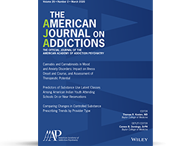Opioid Use Disorder: Is Engaging the Receptor Necessary for Treating the Patient?
Maria A. Sullivan, M.D., Ph.D.
Video: Click here to watch the video recap!
At this year’s annual Area 2 meeting of the AAAP, held May 28, 2014 at the Columbia University Faculty House, the topic for discussion was: “What should be the first-line treatment for opioid use disorder?” The goals of the Area 2 meeting are to allow members to share clinical and professional information and to encourage prospective members to join AAAP.
This Area 2 workshop was designed to provide members with an update on the current state of medication-assisted treatments for opioid use disorder, describing the strengths and limitations of each treatment approach. Building on the experience of clinicians working with several medications, a panel of three physicians sought to elicit clinical experience-based input from the audience with a goal to assess the need of developing a more formal opioid use disorder treatment guidelines that clinicians may find useful in their practice. Many practitioners find it challenging to determine which strategy – agonist, antagonist, or non-medication-assisted – should be the first-line treatment for patients with opioid use disorder.



